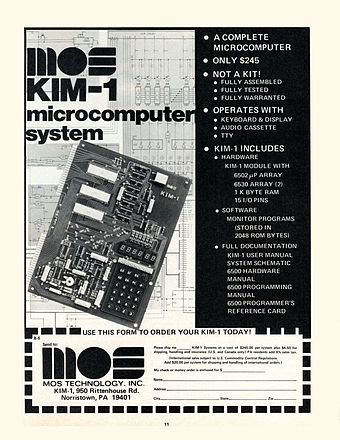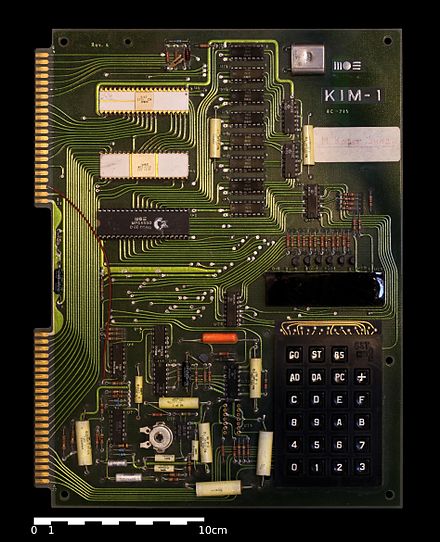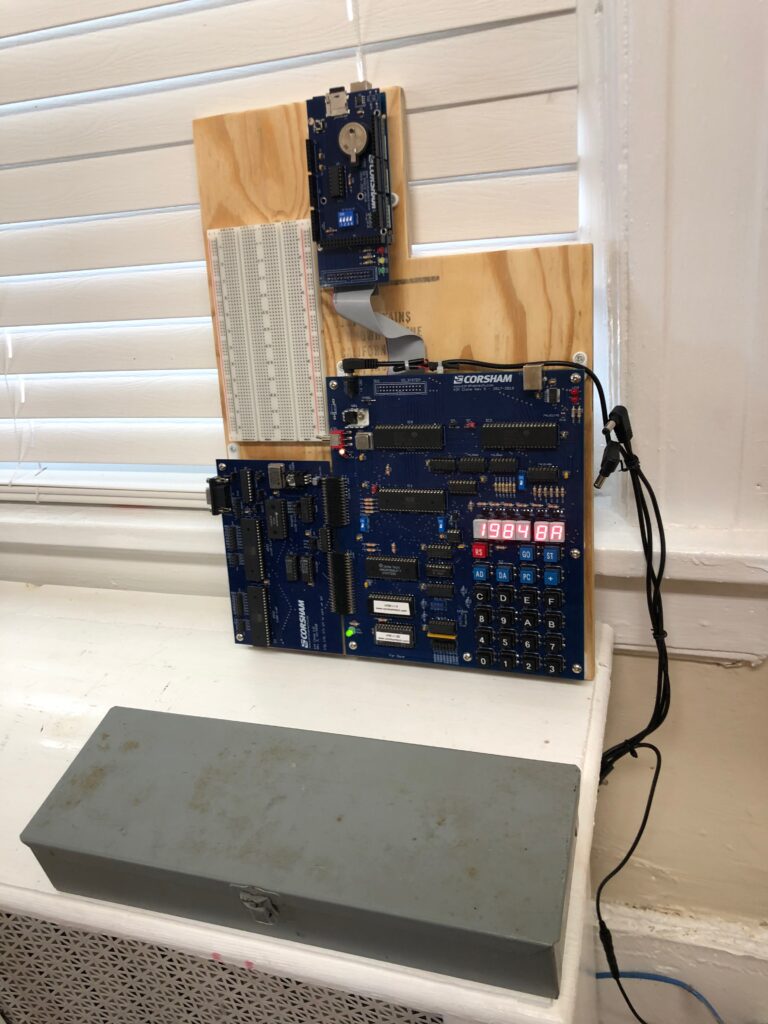MOS KIM-1 (April 1976)
No discussion about vintage computing, 6502, or single-board computers would be complete without talking about the KIM-1.
MOS Technologies released this single-board computer as a development platform for the [then] new 6502 CPU (which was released a year prior in 1975). The KIM-1 featured 1,152 bytes of memory and 2,048 bytes of system ROM. The system ROM (which on later Commodore machines became known as the ‘Kernal’) provided ready-access to a 6 character, 7-segment display, a 23 (*) key numeric keypad, a set of timers, and access to the outside world via expansion edge connectors. Originally designed for engineers, the KIM-1 quickly became popular with hobbyists.
*Why 23 keys? Because the single step switch was located in the 24th position of this 6 row / 4 column keypad.

An early KIM-1 advert
This (pre-Commodore) ad appeared in the April 1976 issue of Byte magazine
Available in kit form for $245, it included a full set of manuals and a built in machine language monitor. It did not take long for the hobbyist community to source parts and methods to interface the KIM with cassette tape (for saving and loading programs), a serial port, and eventually, memory expansion and a rudimentary, character-based video display.
The pristine board in front of you is a faithful clone of the original KIM-1 in every regard except for the addition of a ROM which contains the KIM-1 ‘kernel’, monitor, and I/O routines. The original MCS6530 RRIOT ICs (which contained the ROM images) are nowhere to be found in this day and age.

This particular KIM-1 (pic courtesy of Wikipedia) has seen better days. A few things to point out.
- Heavy wear on the edge connectors
- Original ceramic 6502 processor at U1 (with manufacture date of 38th week of 1976)
- The use of the MOS 6530 RRIOT IC which was a ROM, RAM, IO and Timer chip. The original ceramic IC in U3 has a date stamp of the 16th week of 1976, but a replacement U2 (the second 6530, 5th week of 1980)
- Bodge wire to pin 20 of the ‘user’ connector.
Bring in the clones:
Other famous KIM-1 clones include the KIM-1-ON-STEROIDS “KIM CLONE” created by friend-of-VCF, Bob Applegate of Corsham Technologies:

This model has the add-on I/O board and the SD ‘disk’ board. The breadboard is not connected.
https://www.corshamtech.com/product/kim-clone
… and the KIM-Uno created by Oscar Vermeulen. Oscar is a Dutch maker, living in Switzerland, and is a developer and historian of vintage compute; more of his work can be found at obsolescence guaranteed here:
https://obsolescence.wixsite.com/obsolescence
If you are interested in the KIM-Uno, which is an Arduino pro-mini based image (with other surprises), ask Michael and he might give you a free PCB so you can build your own (supplies are limited).
Also, visit our library for a handful of original KIM-1 books containing program listings, documentation, and home-brew projects. And if you have the patience, key in 206 bytes of “Farmer Brown”* and see what 6502 driven computer graphics looked like in 1976.
*”Farmer Brown” appeared in The First Book of Kim by Jim Butterfield et al. Mr. Butterfield and other contributors can be thanked for what was perhaps the most important book ever written for a computer, considering that the personal computer had not yet been invented. The ‘dedication’, located on page two says it all …
